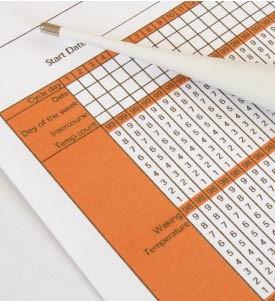Fertility Awareness

Fertility Awareness
Women are fertile about six days in every monthly cycle. Sperm can live up to five days inside a women's uterus or vagina and the egg lives less than one day. Fertility detection methods are safe and depend only on observing what is naturally happening to your body along with abstaining from sperm when you are fertile.
Alert
Women have reported that taking Mucinex - an over-the-counter medication for reducing mucus for colds - can affect cervical mucus. For women who are using Fertility Awareness as a method of birth control or to become pregnant, taking Mucinex can interfere with detection of fertile mucus. Since Mucinex makes Fertility Awareness less effective, women may want to use a backup method of birth control or not take Mucinex.
Methods
It is most effective to use a combination of these methods.
- Taking your morning temperature daily
- Looking at your cervix with a plastic speculum to check for fertile mucus
- Checking your secretions with your fingers to detect fertile mucus
- Establishing your cycle length on a calendar
The calendar method alone is unpredictable because women's cycles can vary. Using a speculum in combination with the calendar or temperature methods can help you precisely identify the beginning and end of your fertile time. Directly looking at your cervix lets you see the changes that occur around the time ovulation is expected. If you use a speculum and look at your cervix a few days after your period you will see that the os, the opening to the uterus, is relatively closed and there is little to no mucus coming out. As ovulation approaches, you will notice the cervical os opens and fertile mucus is present. Once you see the os close after the fertile time, you can assume that your fertile time is over for that cycle and you will not be fertile again until after the next menstrual period.